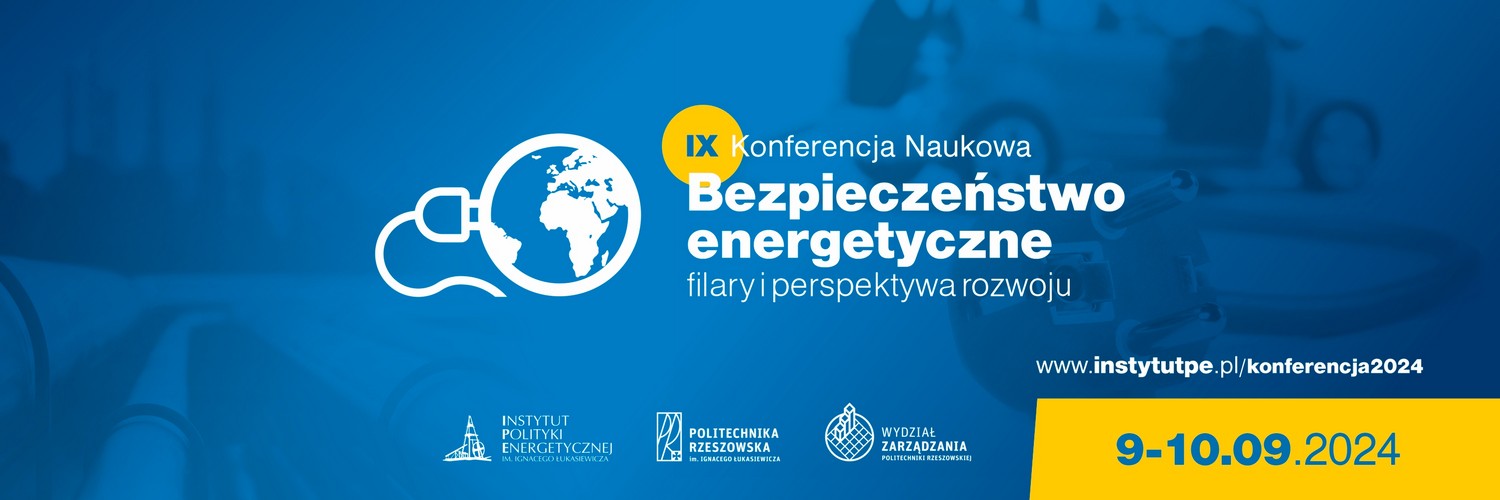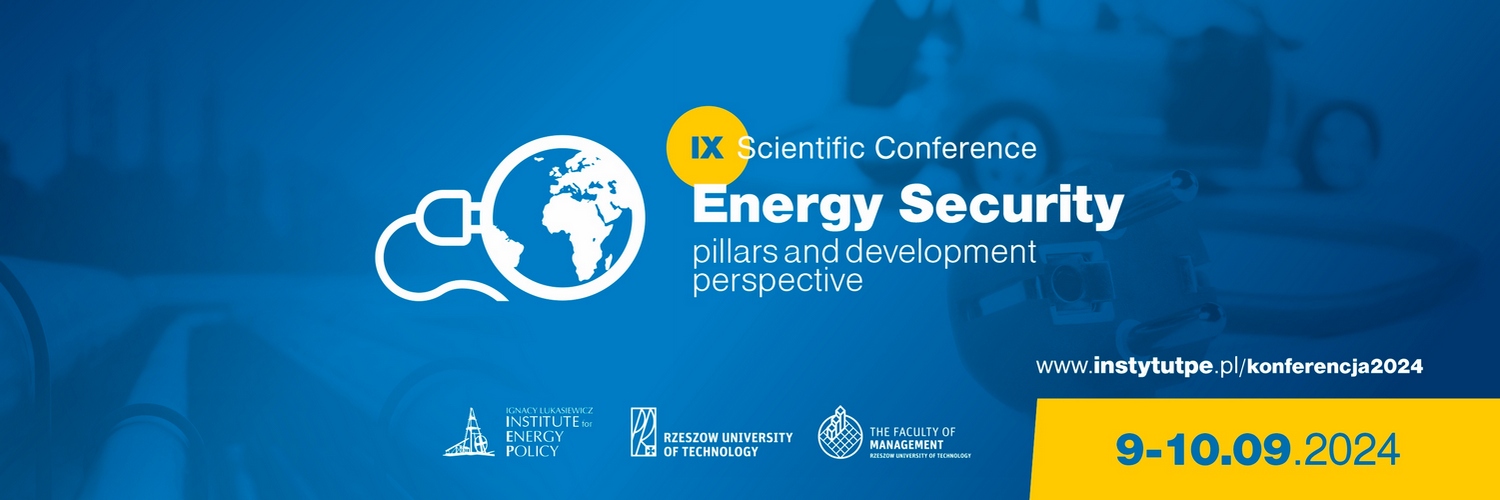ENERGY POLICY STUDIES
Information for Authors submitting an article for publication
Energy Policy Studies is an Open Access journal.
The journal is published under the Creative Commons licence (CC BY-NC-ND 4.0).
To find out more about CC licences go to creativecommons.org/about/licenses
Publishing procedure
- The publication of the article in the Energy Policy Studies journal is based on a written agreement between the Publisher and the Author, which cover the rights and obligations of the Parties, the conditions and manner of their realization, the transfer of copyrights to the paper and including the Author’s statements, among others, about the self-made performance of the Work, non-infringement of the rights of third parties, and consent to publication of the article. Signed documents should be sent to: eps@instytutpe.pl.
- The paper should be sent in electronic version within the time agreed by the Parties to the e-mail address of the Publisher (eps@instytutpe.pl) in Microsoft Word format. In the body of the message must be given the address details of the author / authors, phone number, and e-mail address.
- After receiving the article from the Author, the Editorial Office of the Journal shall perform a preliminary formal, linguistic, and thematic evaluation. The Publisher has the right to return the article to the Author to adapt it to the accepted publication requirements or to refuse the article for publication.
- Within one week from the date of receipt of the article, the Publisher will inform the Author about the sending of the paper to review proceedings. The review proceedings will be carried out in the peer review
- Under review, the article will be subject to formal and substantive evaluation made by two independent persons highly qualified in the field of the research problem on which the paper is focused.
- The condition for publication of the paper is that it receives two positive reviews. If one negative review is received, the paper will be forwarded to a third reviewer or rejected. The final decision in this regard is taken by the Editor-in-Chief.
- In accordance with the agreement concluded between the Publisher and the Author, the Author will address the submitted comments within 14 days from the date of receipt of the review.
- After making appropriate corrections and addressing the submitted comments, the paper will be forwarded by the Author with the author’s corrections, which the Author has undertaken himself to complete within 14 days from the date of receipt of the above message.
- After acceptance of the paper for publishing, the Editorial Office will provide to the Author a copy of the Work in the .pdf format.
Editorial requirements
- The volume of the paper should not exceed 40 thousand characters with spaces (including title, abstract, keywords, main text, illustrated material – including tables and charts, footnotes, and bibliography).
- The paper should be written in Times New Roman font (12 points); line spacing: 1.5 with spaces between lines 0 points; margins: 2.5 cm, without bold.
- The paper should be prepared in the English language and include the following:
- the name and surname of the author with the affiliation;
- the title;
- the summary;
- key words;
- introduction;
- main text;
- conclusions;
- The name and surname of the Author should be written in italics below the title (with ORCID).
- The summary should not exceed 1 200 characters with spaces. It should be placed below the name of the Author before the main text
- The number of keywords should be in the range of 4 to 8 words.
Download editorial requirements EPS
Quotes
Quotes, that is, fragments of other documents, source texts, or scientific papers, must be enclosed in quotation marks. Directly after the quotation, the name of the author should be enclosed in brackets. Each quote must have a relevant footnote. If in the text of the quote are mentioned the titles of papers or documents, these should be written in italics.
Formulas
The patterns used in the article should be placed in the middle of the page, in separate lines (with a spacing of 6 lines) and marked with the number of the pattern and title. In the case of using symbols in the pattern, below the pattern should be placed a legend in which they will be explained. If the source of the pattern is another work or document, the source of the pattern should be given.
Placing illustrations in the text
All illustrated materials, tables, drawings, charts, etc. should be placed in the middle of the page, in separate lines (with a spacing of 6 lines) and marked with the title and number of the material. Below the material, its source should be given (Times New Roman font, 10 points, italics, spacing 1.5). If possible, materials should be prepared in shades of black and grey.
References
In the article is used the so-called Harvard citation format, which uses an ‘author-date’ approach. The in-text references or citations are placed in brackets next to the text that is paraphrased or quoted. The full reference list (i.e. bibliography) is located at the end of the paper.
The patterns of in-text references:
- a monograph: surname of the author/ authors, year of publication, page- (Kowalski, Nowak 2016: 12);
- a journal article: surname of the author/ authors, year of publication, page- – (Nowak 2013: 33);
- an article in a collective monograph: surname of the author/ authors, year of publication, page- (Kowalski 2016: 14);
- legal act- (Dz. U 1964: 16/93);
- an article from a web page – (Nowak 2009: 4)
Bibliography
A bibliography covering all sources of work should be placed at the end of the article (Times New Roman font, 10 points, italics, spacing 0 points).
The patterns of bibliography:
- a monograph – Kowalski K., Nowak N, Gospodarka Polski, Wydawnictwo Naukowe PWN, Warszawa 2017
- a collective work under editorship – Gospodarka Polski, K. Kowalski., N. Nowak, Wydawnictwo Naukowe PWN, Warszawa. 2017
- an article in a collective monograph– Kowalski K., Historia polskiej gospodarki, [w:] Gospodarka Polski, K. Kowalski., N. Nowak, Wydawnictwo Naukowe PWN, Warszawa. 2017
- an article in a journal – Kowalski K., Historia polskiej gospodarki, „Gospodarki świata” nr 1(2017)
- a egal act – Ustawa z dnia 23 kwietnia 1964 r. – Kodeks cywilny (Dz.U. 1964 nr 16 poz. 93 z późn. zm.)
- an article from a web page – Wancerz M., Miller P., Analiza pracy farmy wiatrowej w kontekście parametrów jakości energii elektrycznej, “Rynek Energii”, czerwiec 2017, http://www.cire.pl/pokaz-pdf-%252Fpliki%252F2%252F2017%252F03___wancerz_miller_ree17.pdf (dostęp: 09.08.2017)
- a web page – Chajewska: Cyberatak na wizerunek w sieci?, biznesalert.pl/cyberatak-na-wizerunek-w-sieci/ (dostęp: 09.08.2017)



